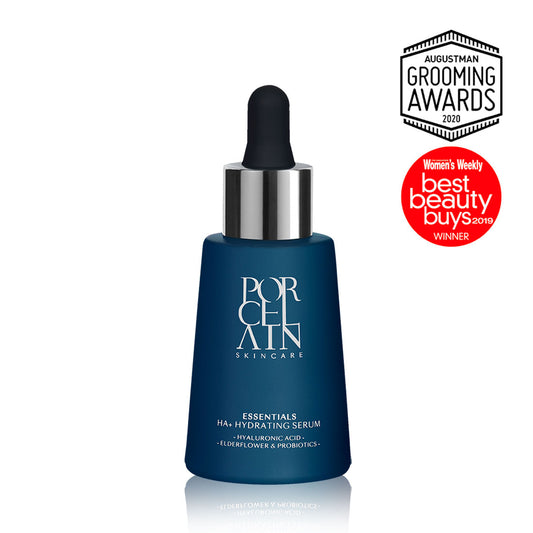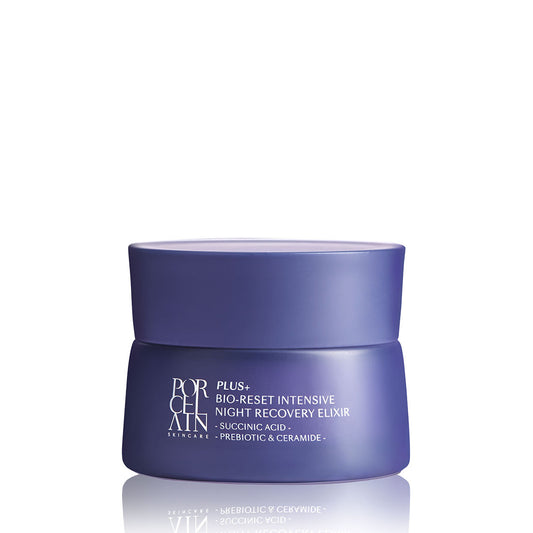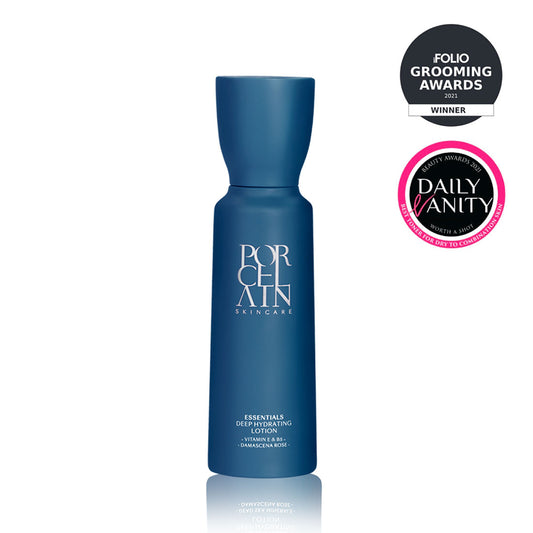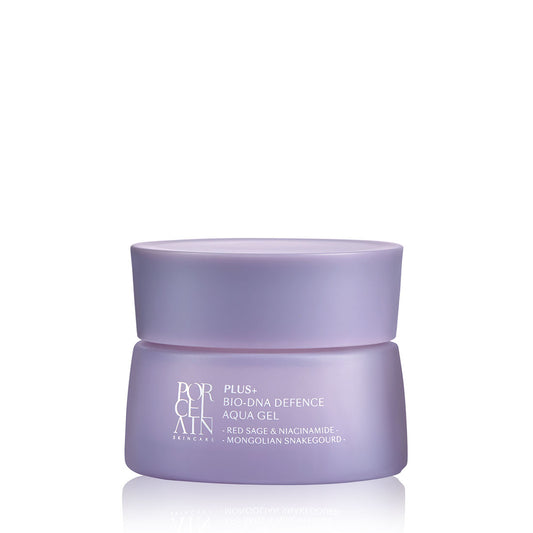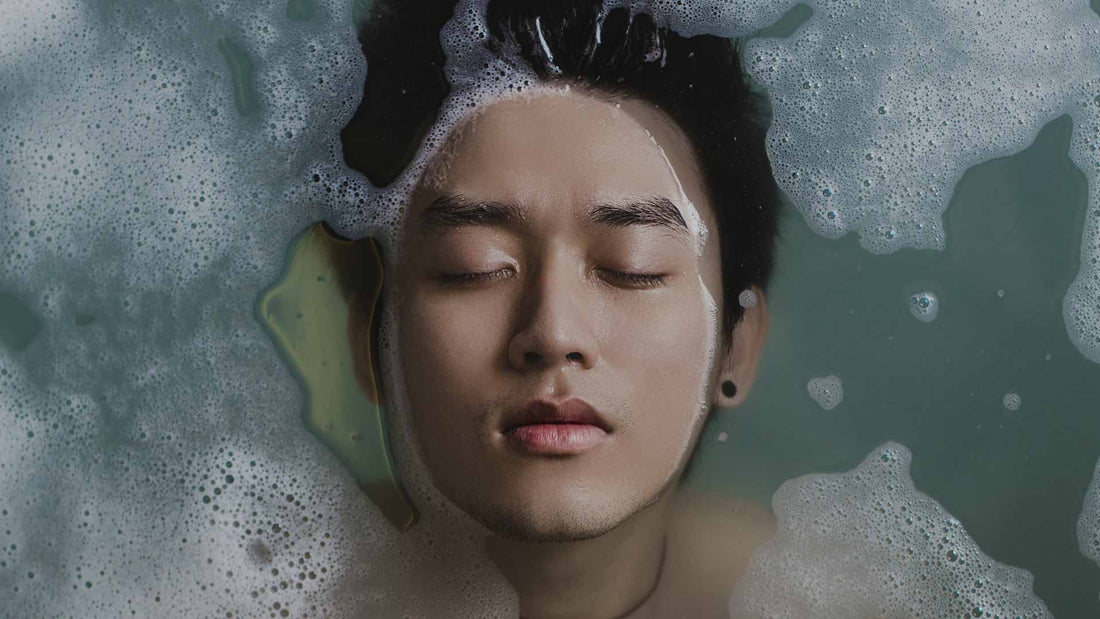Although oil cleansing has long been a staple in the realm of skincare, new ways of using the same product are still being discovered daily. Recently, a new oil cleansing trend has resurfaced: Skin gritting. Skin gritting involves using an oil cleanser for 15 minutes to bring up “grit” in the form of blackheads and sebaceous filaments. Porcelain Skin breaks down this trend to see if this newfound oil-cleansing facial treatment is safe, or hyped-up with hidden dangers, particularly for those acne-prone skin.
What is Oil Cleansing?

Oil cleansing involves the use of oil-based cleansers to remove makeup, SPF, dirt, and other impurities that build up on the skin throughout the day. They are often used as a pre-cleanser in a nightly double-cleansing routine. However, not all oils are suitable for skin care. Cleansing oils are meticulously formulated with ingredients to help hydrate or soothe the skin, while also containing surfactants to help remove oil and dirt.
We know you may be thinking: “I’m trying to remove the oils from my skin, why would I use an oil cleanser and add more oil to my skin?”
Should I Oil Cleanse?

Oil cleansing follows the concept of “like removes like”. With this idea, it makes sense to use oil cleansers to cleanse the skin of its excess oils and other impurities. Furthermore, with many of our daily makeup products being oil-based or waterproof, oil cleansers have proven to be a gentler and more effective alternative to makeup wipes, which often contain alcohol.
Much like skin, every oil cleanser is different. It is crucial to find an oil cleanser that suits your skin’s unique needs and preferences.
The Benefits of Oil Cleansing for Acne-Prone Skin
If you have acne-prone skin, you might wonder if oil cleansing is the right facial treatment for you. However, oil cleansing offers numerous benefits specifically for your skin type, reducing breakouts and inflammation.
1. Deep cleansing
As mentioned earlier, cleansing oils effectively dissolve and remove excess oil, dirt, and impurities from the skin, including pore-clogging substances like makeup and sunscreen.
This thorough facial cleansing can help prevent acne breakouts by reducing the buildup of debris on the skin's surface.
2. Balances oil production
Contrary to common belief, using cleansing oil does not necessarily lead to increased oiliness or acne. In fact, certain cleansing oils contain ingredients that help regulate sebum production, keeping the skin's natural oil levels balanced. This prevents the overproduction of oil which can lead to acne formation.
3. Gently hydrates
Many cleansing oils are formulated with nourishing and hydrating ingredients, such as botanical oils or hyaluronic acid. These ingredients help maintain the skin's moisture barrier, preventing dryness and irritation often associated with traditional acne-fighting products. Proper hydration and facial care can promote healthier skin and reduce the likelihood of acne flare-ups.
4. Non-Stripping
Unlike some harsh cleansers that strip the skin of its natural oils, cleansing oils gently cleanse without disrupting the skin's natural barrier. This is particularly beneficial for acne-prone skin, as maintaining a balanced moisture barrier is crucial for overall skin health and resilience against breakouts.
What is Skin Gritting and Does it Work?
Skin gritting involves vigorously massaging an oil cleanser for 15 to 20 minutes to coax out blackheads and sebaceous filaments. This operates on the principle of “like removes like”, using oil cleansers to “absorb” the blackheads and sebaceous filaments out of the pores. However, there is much debate over whether skin gritting is a legitimate method of removal and whether the extracted “grits” are actually blackheads and sebaceous filaments. Before we jump in, let’s establish what blackheads and sebaceous filaments are.
Blackheads
Blackheads are blockages that form at the surface of the pore, obstructing the natural release of oils. During blackhead extraction, they typically have a plug-like shape with a darker appearance at the top due to oxidation from exposure to air. Professional extraction facials in Singapore will ensure that your skin remains free from congestion and blockages, preventing the formation of blackheads.
Sebaceous Filaments
Sebaceous filaments are thin, hair-like structures that reside within the pore and are responsible for transporting oil to the skin’s surface. They typically appear grey, yellow, or clear.
While skin gritting appears to bring out “grits”, according to New York City Dermatologist Dendy Engelman, M.D. in an interview for Women’s Health, the grits are likely comprised of dead skin from your face and hands, akin to the grains of dead skin you would get from exfoliating with gel exfoliators. Furthermore, the grits seen in viral images are much larger than regular blackheads and sebaceous filaments. Blackheads and sebaceous filaments also do not share the same appearance characteristics as the grits seen in photos. Blackheads tend to be dark only at the top of the plug, while sebaceous filaments are typically thin like hair and less dark.
With all these factors considered, it is safe to say that Skin Gritting does not remove blackheads and sebaceous filaments. Aside from being ineffective at removing congestion, the vigorous 15-minute massage can irritate the skin, over-exfoliate, and cause broken capillaries. That’s not all – rubbing the tiny grits into your skin can create micro-tears, causing inflammation and infections that can result in post-inflammatory hyperpigmentation resembling post-acne marks.
Alternatives to Skin Gritting
While we have debunked Skin Gritting, there are many safer ways that you can minimise blackheads on your skin without the pain and danger of extractions!
#1: Balance your pH
Many skincare issues arise from an imbalance of pH in your skin, directly influencing the strength of its natural barrier. Our barrier thrives when there is an optimal balance of oil and water content in the skin. Imbalances manifest through skin type and symptoms; for example, oily skin types have an imbalance in their pH due to the overproduction of sebum caused by a lack of hydration. Sebum production is your skin’s way of retaining moisture, and when hydration is lacking, your skin produces more oil to prevent further loss of moisture.
Here are some simple principles you can use to help rebalance your skin’s pH.
Hydration is essential for all skin types, including both oily and dry. Oily skin may produce excess oil in response to dehydration, creating an imbalance that can be corrected by prioritising hydration and investing in products that regulate oil production. Conversely, dry skin lacks both adequate hydration and oil, making it crucial to focus on replenishing moisture. As for combination skin, adapt and adjust the above principles according to your unique blend of skin types
#2: Tackle the Root Cause
Blackheads, like any other form of acne, are a result of excess oil buildup and dead skin cell accumulation, which is why cleansing, exfoliation, and regular facials are vital in keeping these blemishes at bay.
Double cleansing does an impeccable job of removing excess oil buildup daily. The initial cleanse aids in removing dirt, impurities, and excess oil, and this prepares the skin for a thorough deep pore cleanse during the second step.
Regular exfoliation removes the buildup of dead skin cells and stimulates skin renewal, leaving behind brighter and softer skin. Need a non-abrasive exfoliator for the job? Try the Natural Skin Refiner!
On top of regular exfoliations, you can add acids (like AHAs and BHAs) into your skincare routines. AHAs help to remove dead skin cells, while BHAs penetrate deeper into the skin to dissolve the mix of sebum and dead skin cells within the pores. While these acids may seem perfect, it is important to use them carefully. Generally, acids should be below 3% in concentration to be safe for daily use. Want our suggestion? Try the Glycolic Toner – a perfectly balanced toner to exfoliate and hydrate the skin. Plus, it’s safe for daily use!
Along with blackheads, you may be looking to remove your sebaceous filaments. However, they are a necessary part of the skin as they help transport oil to the skin’s surface, keeping it moisturised. While it is possible to remove them with professional help, they will regrow every 28-30 days according to the duration of our skin cycle.
#3 Professional Acne Treatments
For those struggling with persistent acne and inflammation, consider opting for professional acne facial treatments. These targeted solutions are designed to not only minimise scars but also tackle the root causes of breakouts, leading to clearer, healthier skin and a renewed sense of confidence.
Options like LED light therapy target acne-causing bacteria and reduce inflammation, while microdermabrasion unclogs pores and stimulates cell turnover to improve acne scarring and texture. Oxygen therapy is another beneficial option, delivering oxygen to the skin to promote healing and rejuvenation.
By supplementing your daily skincare with regular facial treatments, you can mitigate and manage your acne-prone skin, helping you achieve a clearer, healthier-looking complexion in the long run.
—
Do you know of any skincare trends you’d like us to debunk? Let us know! Join our mailing below and let us navigate the realm of skincare together!


